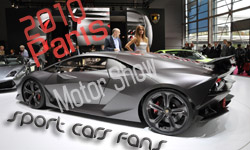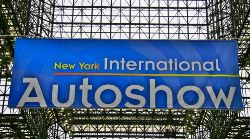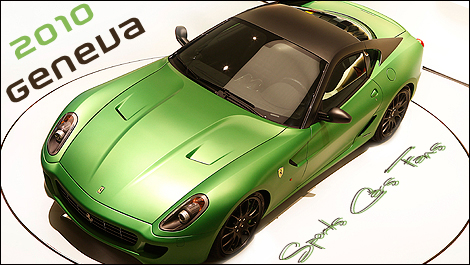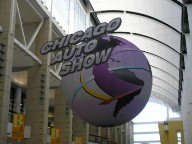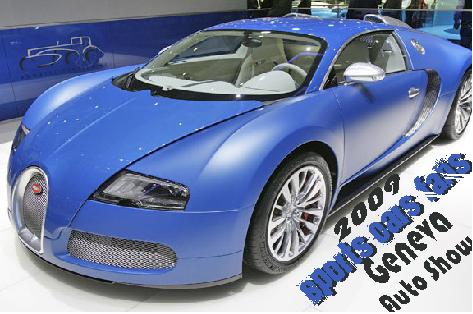First Drive: 2010 Mercedes-Benz E-Class

With eight generations and 12 million units sold over the last 62 years, the Mercedes-Benz E-Class' longevity represents a profound run of intelligent bets for a premium sedan sold in premium quantities. That makes Las Vegas an appropriate background for last week's introduction of the E-Class sedan, Sin City being home to numerous examples of remarkable endurance. Having been outsold by the BMW 5 Series for the last couple of years in the U.S., Mercedes went all-in on the new E, from design to fabrication to luxury to – of course – technology.
Exemplifying how serious Mercedes is about the 2010 E-Class, the car's presentation began with this line from Mercedes' G.M. of product management, Bernhard Glaser: "Everything we know, everything we are went into this car."
We can begin, though, with what's gone on outside the car. To our eyes, the redesign joins the queue of vehicle forms that aren't accurately translated in photos. Unless caught at just the right angle, the car appears shorter in press shots, rendering its conspicuous design features into a somewhat stubby mass that dramatically ascends from front to rear. In person, however, the car gets properly lengthened: the shoulder line and lower door filet rise gradually, the tail doesn't come off as truncated and the E consumes the proper space of a mid-range sedan. Although an inch lower in height (yet with the same ground clearance) than the outgoing model, the new E is nearly an inch longer and four inches wider. It also has a lower Cd than the slinkier 2009 model.
The E-Class' interpretation of the now common form language introduced on the 2006 S-Class is accentuated by four things: the angular cast of the headlamps, which follow the contour of the new SL headlights but are vertically sliced in two; the upper door-line tied thematically around the front helping to break the side into three discretely angled surfaces, working with the prominent, chrome-trimmed lower door line that spans the full distance between the wheel wells, then continues much more subtly around the rear of the car; and the flared haunches that begin toward the back of the rear doors and take their inspiration from the pontoon detail that breezed in on the 180 sedan in 1953.



In photos the car looks like a cluster of lines and angles, and it takes a moment to get accustomed. In person, the effect is not so pronounced; it simply looks like a Mercedes. Being the most momentous re-skin since the 1995 E-Class debuted with the twin headlight face, it is no surprise that its looks might take some time to acclimatize. But when the E begins flooding the roads (and not to spoil the surprise, they will), the car will blend into the surroundings as comfortably as E-Classes past.
Inside, the first things of note are firmer lines and ostensible simplicity. As with the exterior, the details are sharper on this model than the current E: the IP boasts angles, not arcs; the supports are squared off, not softly contoured; and the center console doesn't cascade, it occupies three distinct spatial planes. Even the 'V' theme from the front of the car is mimicked in the instrument panel's shallow chevron.
Mercedes moved the shift lever from the center tunnel to a stalk on the column, a minor move that provides outsized returns in terms of opening up the cabin. Visually, it makes the front area feel more like a single space instead of cockpit and passenger areas, the larger backdrop reducing the impression of how many electronic and mechanical features there are in the cabin. The revamp puts the screen atop the center stack, the climate controls move to a slightly recessed space just above the cup-holders, and layout of elements like the seat controls have been subtly altered. You don't realize how many buttons there are until you start looking for them and it isn't that there are too many - there are probably fewer buttons than before - you simply don't take note until you find yourself saying, "Hmmm, I know it's in here somewhere..." Still, everything is easy to reach. The door lock button has (finally) been moved next to the door handle (hallelujah!), the COMAND control is simple (can I get an amen?), and it doesn't take long to get the layout committed to memory (preach on...).



There are only fractions of an inch more room inside - shoulder room and headroom see gains front and rear while legroom decreases a fraction of an inch, but unless you and Yao Ming buy your suits together you won't want for space. The optional 14-way adjustable seats will also hug, massage, heat, cool, shape-shift, and do everything else they can to get you to relax.
All of that, though, is the easy story of the new E-Class. This car is just as much, if not more so, a tale of technology. Mercedes apparently corralled a group of engineers, locked them in a basement and commanded, "Make safety gizmos!", and didn't release the boffins until they had improved or added a few more entries to the appendix of driver's aids. Let's get this safety party started:
- Attention Assist studies your driving for 20 minutes then keeps track of 70 variables, such as time of day, how long it's been since you used a turn signal, and your steering inputs in order to detect if you're catching Zs at the wheel. If the system thinks you're too fatigued to continue, it will issue a warning chime and a little coffee cup will appear in the speedo.
- Lane Keeping Assist vibrates the steering wheel if the car detects you have unintentionally weaved out of your lane.
- Adaptive Highbeam Assist uses a windshield-mounted camera to detect oncoming cars and adjust headlight settings. It will not only switch the lights from high-beam to low and back, it will also adjust the illuminating distance of the low beams from 984 feet down to 220 feet so that the projection stops short of the oncoming vehicle and the other driver isn't blinded by the light.
- Parktronic Plus with parking assist measures a spot for parallel parking as you pass it and will notify you if the space is large enough. It will then guide you into the space using symbols and text displayed in the IP.
- The E also gets the Blind Spot Assist from the S-Class. The feature places a triangle in the side mirror if you use your turn signal when there's someone in your blind spot. If you begin to change lanes, the system sounds a warning chime and the triangle flashes in the mirror.
- Night View Assist PLUS goes one-up on the S-Class by adding pedestrian detection, and the system places a frame around any pedestrian on the screen in case you confuse one of those bipedal oblong objects for, oh, a boulder that happens to be body temperature.
- Distronic Plus and Brake Assist Plus works with an enhanced radar, now with a range of 656 feet, and D.P. can be set to 'cruise control' and works in stop-and-go traffic as long as the stop is less than three seconds. Brake Assist Plus will add brake pressure if it senses that you aren't braking hard enough to avoid a collision. In a situation where you don't do any braking at all, it calculates the braking pressure needed to avoid a collision and will do just about everything short of driving the car to avoid one. The process happens in three-stages: at 2.6 seconds the system will beep if it thinks you're closing in on an object too fast; if you don't do anything, at 1.6 seconds the system beeps again and applies 40% of the braking force - that leaves you enough steering traction to turn out of the way of the collision if you wish; at 0.6 seconds, if you still haven't made an input, the car applies 100% braking force and PreSafe cinches the seat belts. It probably won't be enough to avoid a collision entirely, but in that last 1.6 seconds the car decelerates by 12 mph, lessening the impact.
- Forty crash tests are federally mandated in order to get a car to market. Mercedes crash tested this new car 150 times, simulated 17,000 additional crashes, drove six million miles in testing. So if things ever really get ugly, there are always the nine standard airbags, the Neck Pro head restraints, the stiffer body made with 72% high-strength steel.
Got all that? Good. Here comes the important stuff...
Initially the E will come in two versions that each have two variations: the V6 E350 with 268 hp and 258 lb-ft, and the V8 E550 with 382 hp and 391 lb-ft. They are immediately differentiated by their steering wheels, with the six-pot having a four-spoke wheel, the V8 sporting a three-spoke wheel.


Both models also come in Luxury and Sport versions, all of which shift through a seven-speed auto. How to tell them apart: the grille on the Luxury version wears four lamellas, the Sport version wears three, along with a more aggressive chin spoiler, a black diffuser insert and trapezoidal tailpipes. Conversely, the Luxury model has a body-colored diffuser and oval tailpipes. Inside, the dash gauges on the Luxury variant rest flat against the panel, while the Sport model's gauges are recessed into individual cowls. The Luxury model is fitted standard with 17-inch, five, twin-spoke wheels, the Sport gets 18-inch, five-spoke wheels. The Sport is expected to account for around 80% of sales in the U.S.
Nevertheless, absolutely none of that counts unless the car actually drives like you want it to. So with steering wheel in hand, feet on pedals, and enough technology for the car to qualify as an Autobot, it was time to beat the tar out of our test vehicles.
Except, that's not really what you do with an E-Class. Furthermore, in contrast to the city's reputation, Las Vegas' mildly undulating B-roads are almost as straight as the cross, so not the best place to go bashing the outer walls of E-Class performance.


What we can tell you is this: the V6 E-Class is all about stately. Its 268 horsies get the 3,891-pound car to 60 in 6.5 seconds, urgent enough to provide an adequate sensation of speed and leisurely enough not to distract your attention while doing it. As on the V8 you have the option of Sport and Comfort modes, yet while flicking into Sport will give you more aggressive throttle control and shifting, there won't be an appearance by Mr. Hyde. Bury the throttle, the car downshifts fractionally quicker than it did in Comfort, but barely warrants its "Sport" designation.
The V6 comes with a suspension dubbed Agility Control, which complements the four-link, independent, steel-sprung setup with an adjusting, stroke-dependent, variable-rate damping. Utilizing valves in each of the dampers, the system is meant to provide increased poise during maneuvers. We don't doubt it works - we just never got any driving opportunity that allowed us to say "Aha! That's the Agility Control working!"
The V6 is just what you would expect from the base model of Mercedes' middle sedan: solid marks everywhere, no fireworks. The steering is light, fine, but has a touch too much slack around center for our liking. At elevated highway speeds you'll hear practically nothing but the stereo and your conversation. Ask for more, the car fulfills orders efficiently, without complaint. And it looks and feels like a Mercedes in the process.


The V8 hauls its 4,145-pound mass to 60 mph in 5.2 seconds. We were told that V6 models are expected to make up about 75% of U.S. sales, but if you lay out the extra $7,700 for the E550 it will be apparent with almost every mile and throttle input where that money went. The AirMatic suspension keeps everything flat and even in a way that doesn't euthanize feedback, the slightly heavier car and heavier front end translates into slightly (and nicely) firmer steering, and the car is faster everywhere. Press the Sport button and in addition to the enhanced inputs, the car lowers itself by an inch, and you can press another button for electronically-controlled four-wheel dynamic damping. Frankly, it didn't feel much different to our rear end on a desert road that offered occasional spots of sand as its biggest challenge, but measured next to the V6 those ubiquitous and cumulative tenths equal an exponential, as opposed to cumulative, improvement.

This might appear to leave us a little short on handling impressions, but in truth we know just about all we might need to know about the car. The question about the E350 and E550 is really this: do these cars succeed in their roles as E-Classes? The answer is "yes." People don't buy either car to set records up the Matterhorn or do time-attack runs to Dean & Deluca - that's what the E63 AMG will be for. People buy non-AMG E-Classes because they want to get from here to there luxuriously and safely, and they want The Mercedes Experience while they do it. Both cars deliver on that since, on the inside and underneath, they have done nothing more - and nothing less - than add another story or two to the tower of E-Class sensibilities and capabilities. On the outside is where the car has put a gap between it and the eighth generation, but it's one that, like the revelations of the first official E in 1984 and the W210 in 1995, will certainly find buyers as reliably as it's done for 62 years. That means we expect the new E to be another winning gamble.

The 2010 E-Class goes on sale this July. While the 2009 E350 retails for $53,200, the 2010 model - with all of the extra standard equipment - will sticker for $48,600 (plus $875 delivery). The E550 takes that up to $56,300, and the 4Matic option adds $2,500 to both cars. Later this year the E63 AMG bows, and next year sees the line rounded out with the E350 4Matic Wagon, the V6 turbodiesel E350 Bluetec, and the E Cabriolet.
[Source: Autoblog]
